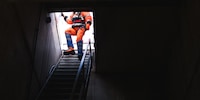
Background information
The invisible indispensables
by Michael Restin

Researchers from all over the world are looking for a solution to safely store radioactive waste for thousands of years. Where? In a hole in the Swiss Alps. There is no daylight – but there is love.
On this January morning, as always in winter, the Grimsel Pass is closed after the village of Guttannen. Photographer Thomas and I are the only visitors far and wide. Nobody comes here at this time of the year. Not even the sun. Only the mountain tops that are glowing in gold let us assume the sun has risen. It is half past nine in the morning when we stop in front of a gate. Here, in the heart of the mountain range between the Bernese Oberland and the Goms Valley, researchers from the Nagra (National Cooperative for the Disposal of Radioactive Waste) are gazing into the crystal ball. They're looking for the answer to a question that will last for eternity: where do we bury our nuclear waste so that it will be safe for a million years? [[fullsizeimage:32223548]]
The gate in the mountain is the entrance to an underground labyrinth that was built into the rock for the power plant that's located higher up on the mountain pass. «Nagra operates a kind of rented rock lab here,» says laboratory manager Ingo Blechschmidt. It's located at a depth of two kilometres in the granite of the Aarmassif, 1,730 metres above sea level. The rock layer above it is 450 metres thick. In front of the entrance, a sign warns visitors of the dangers of entering. It's written in four languages, none of which is a national language of Switzerland. «In summer, tourists regularly end up in here, as the gate remains open for a short time after we enter and the labyrinth is mistaken as a tunnel,» Ingo adds while the gate slowly opens. He hands us fluorescent safety vests – that's the law – and we put them on.
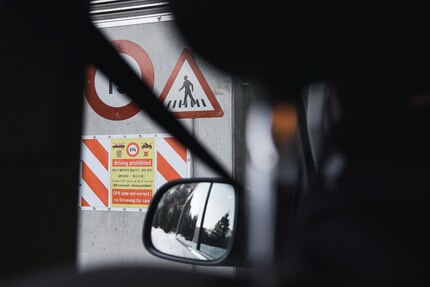
It takes my eyes a while to get used to the darkness before I can see the tunnel. It's as wide as a car and lined with bare and uneven stone walls. There are a few neon lights on the left side of the tunnel and cables winding their way up. This is the exact opposite of the perfectly developed road tunnels we usually experience in Switzerland. The road in this tunnel is bumpy, filled with potholes and in need of renovation. It feels like a behind-the-scenes experience: the mountains and the reservoir are the perfect Disneyland facade while the technicians in here maintain the idyllic illusion.
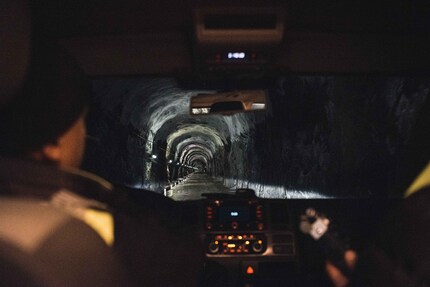
Ingo parks the bus in a small niche in the middle of the tunnel. «Here we are. Area 51!» he jokes and gets off. The geologist has run the lab for thirteen years. Originally from Thuringia, he received his doctorate in Bern in the late 1990s. Since 2004, this tunnel has been his workplace for one or two days every week. He spends the other days either at the headquarters in Wettingen or travelling. His lab is hidden behind a door in the rock, signposted in bright letters. We're welcomed by Ann-Sofi Dorrer. She looks at us and asks: «Didn't you find orange safety vests for visitors? The yellow ones are only for employees.» «No, these are my emergency vests,» Ingo answers and adds that Ann-Sofi is responsible for security. «But mainly for looking after guests,» she says and leads the way to the conference room. Guests are either researchers from all over the world or groups who visit the rock lab on guided tours in the summer. We're the only visitors today.
We're in an office wing that was built in the founding years of the company in the 80s. That's unmistakable. The lab could serve as a film set for a horror movie, in which an experiment goes wrong and a high dose of radiation makes a researcher mutate into a monster. But no one here is working with radioactive material. The front wing consists of offices, a workshop, a kitchen and a meeting room. This is where Ann-Sofi brings us coffee, while Ingo talks about the research project.
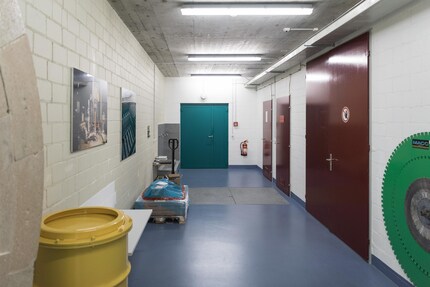
«Nagra is the garbage disposal for radioactive waste.» Its mission is to bury radioactive waste underground so that it's safe for a million years without supervision. Out of sight, out of mind. A million years is a long time, to say the least. To avoid any unpleasant surprises, the radioactive material must be stored underground as safely as possible. It needs to remain unaffected by earthquakes, erosion or water, otherwise disaster is imminent. Opponents of permanent repository keep warning of this. How does he deal with this? «I'm a geologist. My job is to dispose of nuclear waste in a safe way. I'm not the one who produced this radioactive material. Yet, there's no denying that it exists and we need to find a way to get rid of it», Ingo answers.
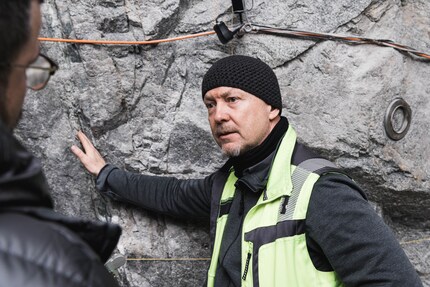
The organisation is financed on the basis of the polluter pays principle: whoever produces radioactive waste pays for it. This is nuclear power plants but also hospitals or universities. Switzerland currently collects its nuclear waste at an interim storage facility in Würenlingen in the canton of Aargau. The final deposition of high-level waste is a problem that Switzerland hasn't solved yet. Nobody knows what Switzerland will look like in a million years. All that researchers can do is make assumptions based on the past. «When this lab in the Grimsel was built over 35 years ago, the state of research was completely different,» Ingo says. «At that time, we assumed that granite rock, as found in the Grimsel, was the best solution. Today we know that the so-called Opalinus Clay is the most suitable rock in Switzerland.» Opalinus Clay is found in the Jura Mountains and in the north of Switzerland, where there's a lower risk of major displacements. «That's why we opened a second rock lab in the Jura,» Ingo adds. Switzerland's current plan is to build the repository at a depth of about 600 metres in a naturally occurring layer of Opalinus Clay. The radioactive waste will be placed in steel containers, which are then stored in the repository. Granite, as here in Grimsel, is no longer an option for a repository.
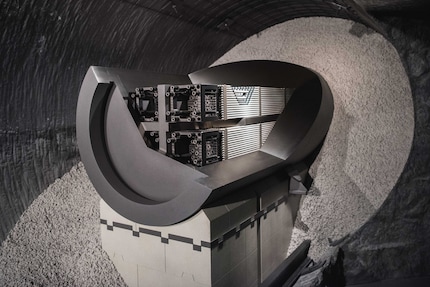
Despite this, Nagra continues to carry out research in the Grimsel, not least because the international partners are highly interested in this Swiss project and are co-financing the rock lab. With great success: this year, the world's first repository is set to go into operation in Finland. It is built in granite. Based on the geological conditions of the region, granite is the best suitable rock there. Findings from the Grimsel rock lab have contributed to this decision.
«Would you like another cup of coffee?» Ann-Sofi asks with a slight accent. Born in Sweden, she's been in charge of the safety and well-being of employees and guests in the tunnel for ten years. It's a part-time job. Her husband René joined the company five years ago as head of operations. They hadn't planned on spending a large part of their time together in a hole in the mountains. René used to work on gas turbine installations all over the world. He worked in the Middle East and Asia for eight years. This was when he met Ann-Sofi. Not in Dubai or Jakarta, but on the Brünig Pass, where Ann-Sofi worked as a kitchen assistant for a season. Love made René return to Switzerland and Ann-Sofi stay in Switzerland. René started working at the power plants in Bernese Oberland and they lived together until 2007. But it didn't feel right. Today, René calls it an «inner unrest» that drove him to go abroad again after the birth of their daughter: he took on a job in Holland. During this time, Ann-Sofi and their daughter lived in Sweden. They were geographically separated for about one and a half years, but ate dinner together every day – via Skype. Ten years ago, the young family settled down in Meiringen, where Ann-Sofi began working in the rock lab. The inner unrest had disappeared and the Dorrer family has lived in the Bernese Oberland since.
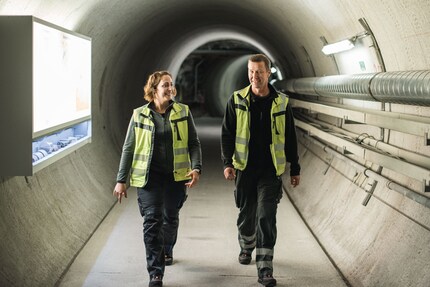
René leads the way through a blue door into the heart of the laboratory. It's a perfectly circular tunnel, excavated with a tunnel boring machine. The walls are polished to resemble a granite kitchen countertop.
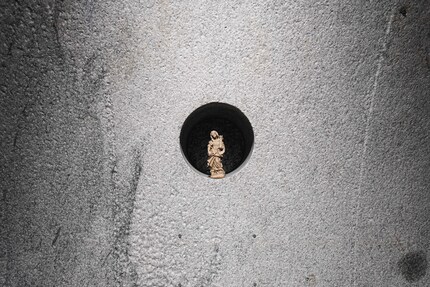
The walls are dotted with holes in all sizes and cables are sticking out and connected to measuring instruments. There's a wooden figure in one hole. «This is Saint Barbara, patron saint and protector of miners and tunnellers,» Ingo says casually. He’s here to talk about work not religion. I notice a strange device on the wall. Between two horizontal bars in the wall, there's a plexiglass cube that protects cable and a device. This installation could easily pass for an expensive work of art at Art Basel. On closer inspection, I see that the device is mounted exactly above a crack in the wall. There's a slightly darker, rugged line cutting through the smooth granite. «These so-called fault zones are of particular interest to researchers because this is where water might flow,» Ingo explains. The rock is more likely to show movement here than anywhere else. The Art Basel device measures this movement in an amazingly non-digital way: two glass plates that are placed on top of each other indicate the slightest movement as soon as they move against each other. Webcams take a picture of the plates every few hours and send the pictures to the Czech Republic for evaluation. This webcam installation is what I see in the glass cube. «The team from the Czech Republic called the other day to ask if everything is okay with us because they measured a strong earthquake. But we didn't notice anything here. It turned out that a school class was taking a guided tour at the time and someone probably touched the installation,» Ingo says. This was when we decided to put up a protective glass box.
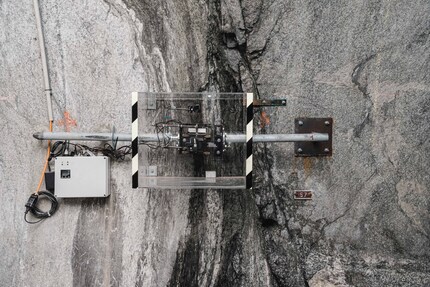
Lab manager Ingo looks at his watch. «Time for lunch soon. We have to get going or we won't have time to see the controlled zone,» he says and hurries into a side tunnel. For the first time, I see the characteristic black radiation warning sign. Research with radioactive material in progress. «We’re the only ones in the world who are allowed to do so,» Ingo says and I sense some pride in his voice. My predominant emotion, however, is fear while I slip on a white lab coat and listen to the instructions. The lab manager seems to have noticed. «There’s nothing to worry about. No experiments are in progress right now and we only have weak radioactive cocktails here,» he says jokingly. I trust him, although the term «radioactive cocktail» sounds adventurous.
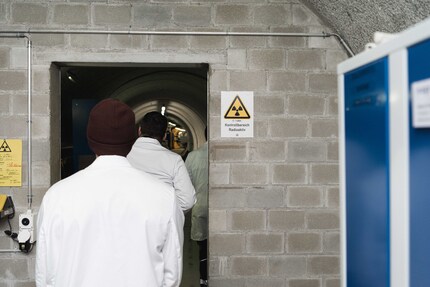
Chemist Michael Treuthardt is the master of the controlled zone. He is currently testing two samples for radioactivity and is working with a box of lead. Lead blocks radiation. Everyone who has ever taken an X-ray knows that. Michael measures the samples with a Geiger counter. But the lead box isn't to protect us from radiation, but to protect the samples from the natural ambient radiation. As granite is slightly radioactive, the Geiger counter shows slight signs of radiation outside the box. As soon as Michael moves the Geiger counter into the box, it only measures the low radioactivity of the samples. Reassuring that the samples radiate less than their surroundings, right?
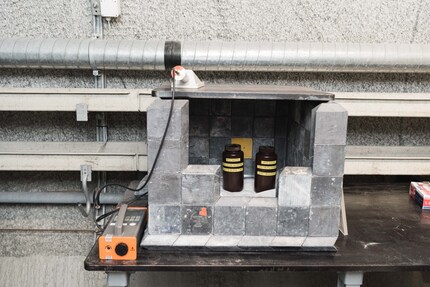
Twenty metres further into the controlled zone, the tunnel is supported by a yellow steel structure. Cables and meters are sticking out from the walls. The yellow cladding and the many measuring instruments look like a submarine. In fact, the construction was made by a company that specialises in submarines. Ingo lovingly calls this the «Yellow Submarine». «This isn't a supporting construction but an oversized seal,» he says and goes on to explain something about pressure differences between the tunnel and the rock, and that these pressure differences are compensated for by the construction. He's lost me. When he mentions that it took eight years from planning to construction, I follow his story again. Long-term experiments require long-term planning. To make sure that nothing goes wrong, the researchers worked on the conceptual design for no less than eight years.
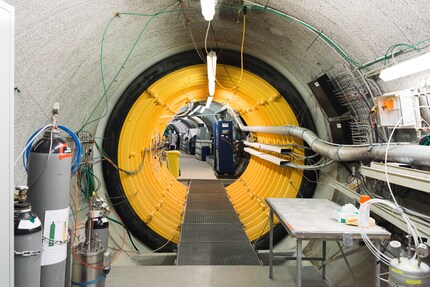
I realise I could never work here. I could get used to the lack of daylight but not to the long-term projects. I've never stayed in a job for more than five years so far. After five years, the planning of the experiments in the rock lab wasn't even completed. This is a job for life. A job the lab manager seems destined for. He joined Nagra in 2004 and has been the lab manager since 2007. «It takes idealists. I love the job. This international aspect in particular gives me the feeling that I'm working towards something greater. We' re still at the very beginning. The world's first nuclear waste repository is opening in Finland and dozens will follow all over the world. This is pioneering work.»
Not everyone shares this enthusiasm. «Working up here doesn’t appeal to most people. I've seen an applicant leave her trial day after an hour,» Ingo tells me on the way back to the office wing. He's all the more grateful for the faithful spirits like the Dorrer couple.
It was no problem for her to switch from the wide world and a long-distance relationship to the narrow tunnel, says Ann-Sofi. «I used to work in department stores. There's no daylight there either. I enjoy working here much more. It's less hectic.» René agrees with her: «This job offers a lot of variety. I drill the holes for the experiments, supervise them and maintain the lab. There's a lot more human interaction than you might think. It's quiet now, but when ten international researchers work here and then two school classes visit the tunnel, you'll be glad to have peace and quiet in the evening. In such situations I don't even notice that we're in the middle of a mountain.»
As René says, they're never alone down in the lab and tunnel. There are power plant employees working further down the tunnel, and the mountain hospice uses the access in winter to transport food. «We're like neighbours here. If I need a tool, I borrow it from the people at the power plant. I just have to bribe them with sweet hazelnut croissants,» René says with a smile. There's even someone who comes to the rock lab just for the company. Home electrician Toni Baer from Schwanden near Brienz. «Once a week, I check up on things here. I run a one-man business, so it's nice to meet people up here,» he says while repairing a plug strip.
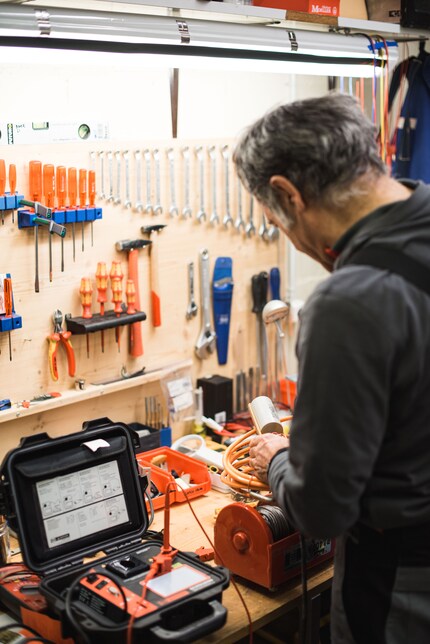
The rock lab is like a small family. It’s like other Swiss companies, just hundreds of feet below the surface, deep in the Swiss Alps. From the inside, it could just as well be an office in an industrial area in a suburb of Zurich, where everyone chats and eats together in the kitchen, one good spirit decalcifies the coffee machine once a month and the facility manager replaces flickering light bulbs. It's only when we leave the office and I look down the long, narrow access tunnel that I realise how tight everything is down here. As the gate rises and the daylight blinds me, I'm glad to be outside again. I lost all sense of time in the tunnel. Only the mountain tops that are glowing in gold let me assume the sun hasn’t gone down yet.
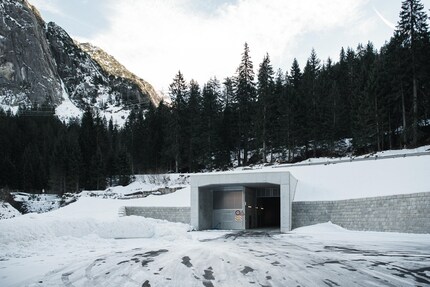
When I flew the family nest over 15 years ago, I suddenly had to cook for myself. But it wasn’t long until this necessity became a virtue. Today, rattling those pots and pans is a fundamental part of my life. I’m a true foodie and devour everything from junk food to star-awarded cuisine. Literally. I eat way too fast.
Interesting facts about products, behind-the-scenes looks at manufacturers and deep-dives on interesting people.
Show all